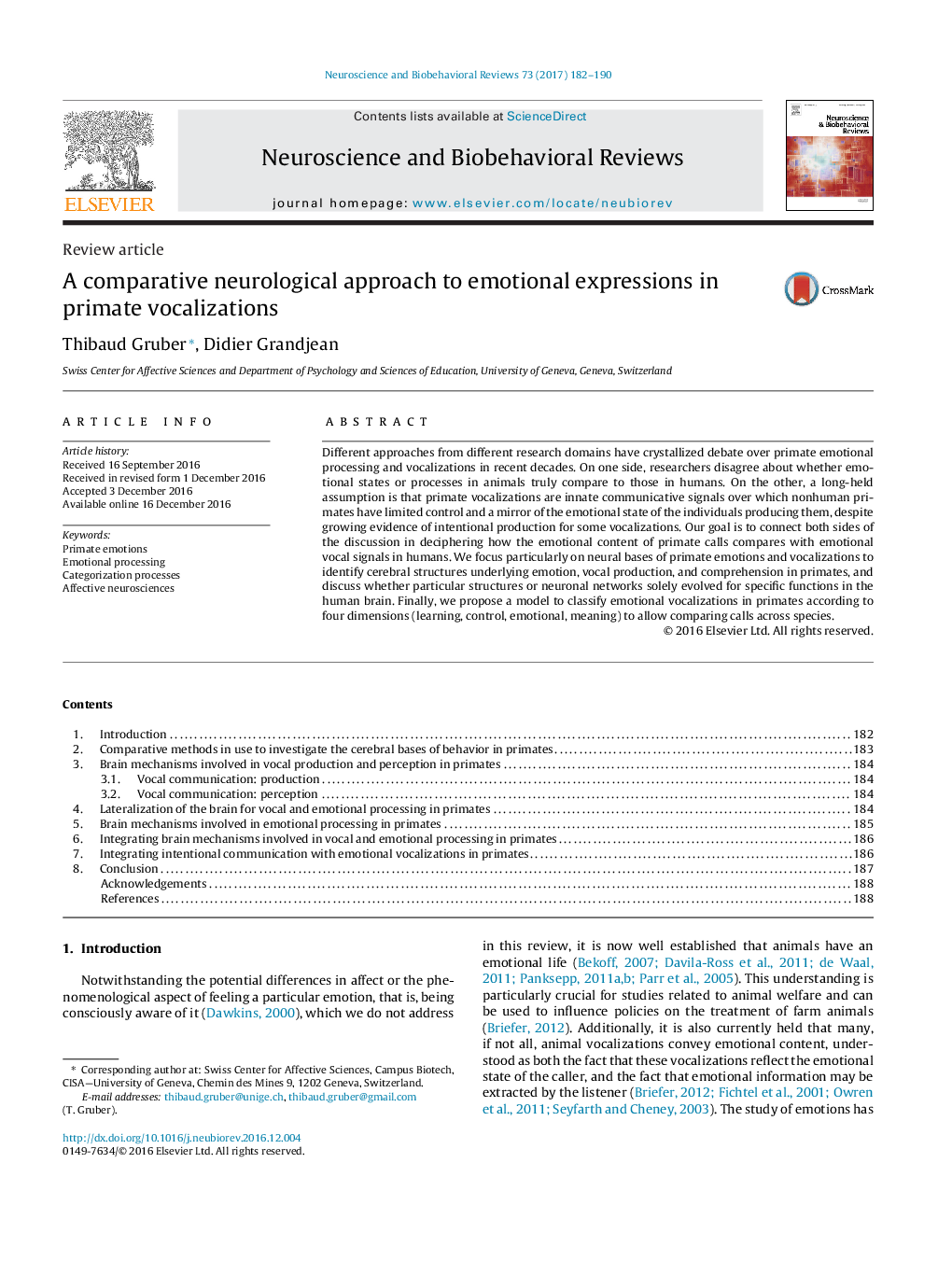| Article ID | Journal | Published Year | Pages | File Type |
|---|---|---|---|---|
| 5043537 | Neuroscience & Biobehavioral Reviews | 2017 | 9 Pages |
•Primate vocalizations carry emotional content but connection to humans is debated.•Neural circuitry for vocalization and emotion processing overlap in the IFG and STG.•We predict a STG-STS-IFG network of emotional vocalizations common to all hominids.•Degree of intentionality in production can sort out emotional vocalizations in primates.
Different approaches from different research domains have crystallized debate over primate emotional processing and vocalizations in recent decades. On one side, researchers disagree about whether emotional states or processes in animals truly compare to those in humans. On the other, a long-held assumption is that primate vocalizations are innate communicative signals over which nonhuman primates have limited control and a mirror of the emotional state of the individuals producing them, despite growing evidence of intentional production for some vocalizations. Our goal is to connect both sides of the discussion in deciphering how the emotional content of primate calls compares with emotional vocal signals in humans. We focus particularly on neural bases of primate emotions and vocalizations to identify cerebral structures underlying emotion, vocal production, and comprehension in primates, and discuss whether particular structures or neuronal networks solely evolved for specific functions in the human brain. Finally, we propose a model to classify emotional vocalizations in primates according to four dimensions (learning, control, emotional, meaning) to allow comparing calls across species.
